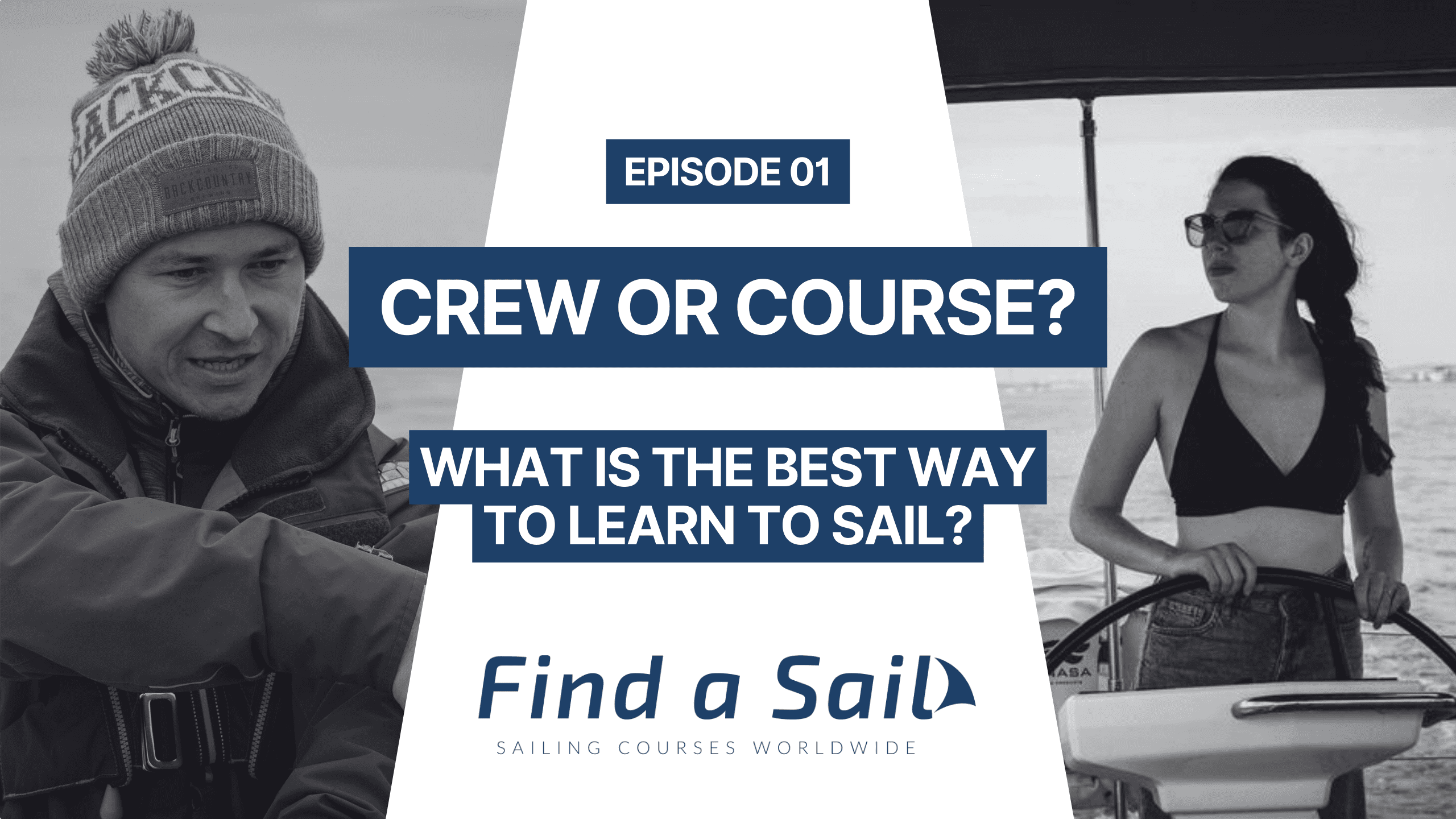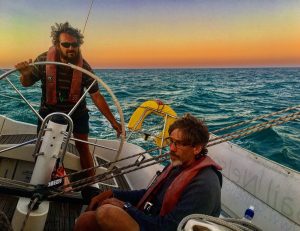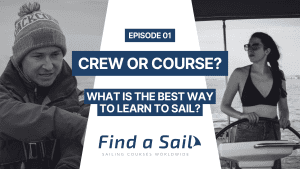Introduction: The big question many new sailors ask
If you want to learn how to sail, should you jump aboard a crew or take a formal sailing course?
This debate appears all the time in sailing forums and among aspiring sailors. Some argue you should just hop on a boat and learn by doing, while others insist that a structured sailing course is the best way to develop skills and confidence.
So which is actually better?
This is our perspective—Patrik, an RYA instructor and instructor trainer who started as crew on a friend’s boat before taking formal courses and cruising extensively, and Sarah-Jayne, who began as a novice crew and later became a skipper.
Watch the embedded video for the full conversation, including real-life experiences—Sarah’s first offshore passage in heavy weather, insights from Patrik’s years as an instructor, and a breakdown of the costs, challenges, and benefits of both learning paths.
Below are our key takeaways
Safety
Variable safety standards
Not all skippers prioritize safety to the same degree. Some provide thorough briefings and maintain their boats meticulously, while others might not. When joining a crew, do your research, assess the skipper’s approach to safety, and be ready to walk away.
Courses ensure regulated safety measures
Sailing courses provide a standardized safety environment. Training boats undergo regular inspections, adhere to strict maintenance schedules, and are equipped with essential safety gear. Instructors are professionally trained and certified, ensuring a safe and effective learning environment.
Learning
Are you actually learning?
A sailing course ensures that your learning is the primary focus. Instruction follows a structured, step-by-step approach tailored to your skill level. You actively learn by doing, not just watching, with professional coaching and immediate feedback to correct mistakes and reinforce key concepts.
Crewing, on the other hand, varies significantly depending on the skipper and the boat’s objectives. The primary agenda might be delivering a boat, racing, or weekend cruising—where structured learning is secondary. Some skippers take time to teach, but many simply need extra hands on deck. Crew members often specialize in one task, such as trimming sails or helming, but miss out on broader seamanship, navigation, or boat handling experience.
We’ve seen experienced round-the-world crew struggle in their skipper courses because, while excelling at specific tasks like sail trim, they lacked fundamental skills such as chart work, decision-making, and overall boat handling.
To be a good skipper is one thing. Teaching and effectively guiding new sailors is an entirely different skillset.
Cost
Crewing: lower-cost entry
Crewing is often the cheapest way to get on the water. Many captains only ask for crew to contribute to food or fuel, and some offshore deliveries offer free passage in exchange for duties. However, learning depends entirely on the skipper’s willingness and ability to teach, and progress can be slow. Paid crewing experiences can sometimes cost as much as a structured course—without the same focused instruction.
Courses: an investment in structured learning
Courses require an upfront cost but provide structured training that accelerates progress. Weekend courses start at around $300, while full certifications like RYA Day Skipper or ASA 101 range from $800–$2,500, offering recognized qualifications. Some regions, such as parts of Europe, have more affordable options.
If you just want to experience sailing, crewing is an inexpensive way to get started. But if your goal is to build skills quickly and efficiently, a structured course is the better investment.
Final verdict: The best approach to learning to sail
Both crewing and taking a course have their place in your learning journey. Crewing offers a great way to get on the water, but for structured skill development with safety in mind, a formal course provides the best foundation.
Best approach?
- Build a Foundation: Enroll in a beginner course like the Competent Crew or ASA 101 that covers core skills, safety, and seamanship.
- Expand your experience: Crew on different boats to apply what you’ve learned and gain real-world exposure.
- Take charge: When you’re ready to skipper, pursue advanced courses like ASA 104, RYA Day Skipper, or IYT Bareboat Skipper to develop the skills needed to sail independently and keep learning.
We believe this approach builds confidence, maximizes learning, and mitigates risks, ensuring you can step aboard with real competence—ready to take on and learn from every challenge on the water. To hear our full discussion—including personal anecdotes and deeper insights—watch the embedded video in this article.



